
Date: September 14, 2019
Location: Lat: 39.82075°, Lon: -70.85013°
Dive Depth Range: 1,089 - 1,277 meters (3,573 - 4,190 feet)
Access Dive Summary and ROV Data
Octopods abound during the final dive of the Deep Connections 2019 expedition. Video courtesy of the NOAA Office of Ocean Exploration and Research, Deep Connections 2019. Download larger version (mp4, 110.7 MB).
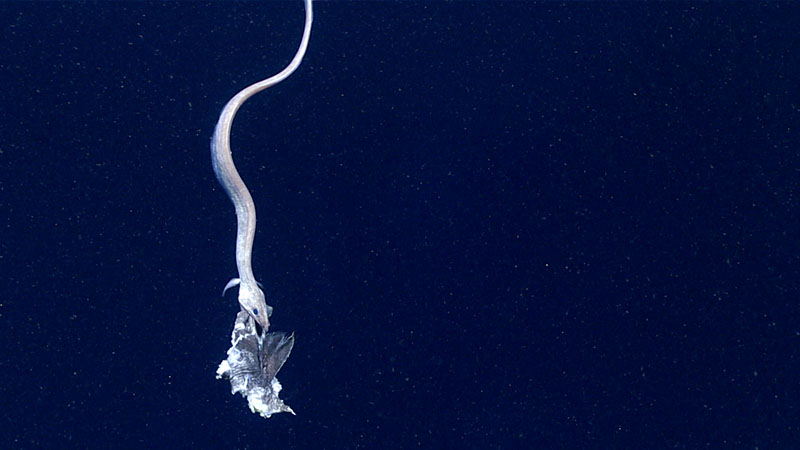
Cutthroat eel (Synaphobranchus affinis) feeding on a piece of fish during the final dive of the Deep Connections 2019 expedition. Image courtesy of the NOAA Office of Ocean Exploration and Research, Deep Connections 2019. Download larger version (jpg, 1 MB).
Today was the final dive of the Deep Connections 2019 expedition. The dive targeted a minor box canyon located between Block Canyon and Alvin Canyon, and was selected due to models predicting that it would contain suitable habitat for deep-sea corals and sponges. This dive site was also located in close proximity to the Ocean Observatories Initiative (OOI) Pioneer Array, so benthic data collected during the dive can be tied to long-term oceanographic datasets collected at the array.
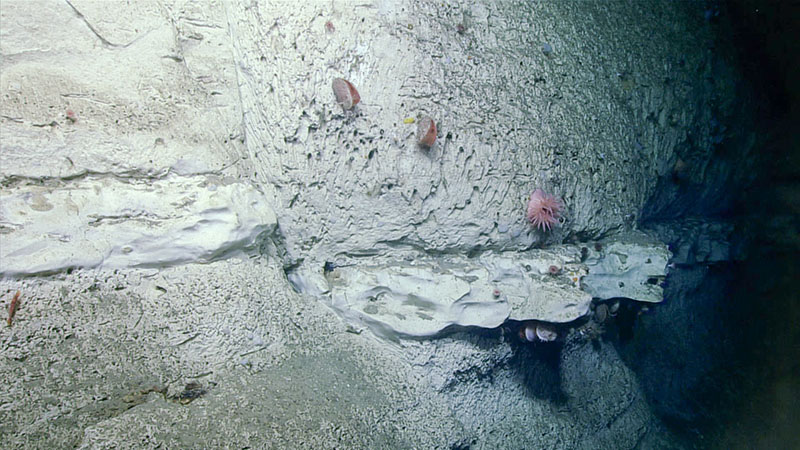
A fault in a rockface observed during the final dive of the Deep Connections 2019 expedition. Harder carbonate rock was more frequently overgrown by organisms compared to the softer interceding areas. Image courtesy of the NOAA Office of Ocean Exploration and Research, Deep Connections 2019. Download larger version (jpg, 1.5 MB).
Upon reaching the bottom, we found a benthic community characteristic of the soft substrate seen throughout this expedition, comprised of small swimming sea cucumbers, hake, cutthroat eels, and octopods. The canyon axis also had carbonate debris scattered throughout. Once the remotely operated vehicles (ROVs) reached the canyon walls, we found that the lower parts were comprised of highly consolidated, but not cemented mudstone, which has been observed in numerous other canyons throughout this expedition. The canyon walls were steep, but not heavily colonized by encrusting organisms aside from small demosponges.
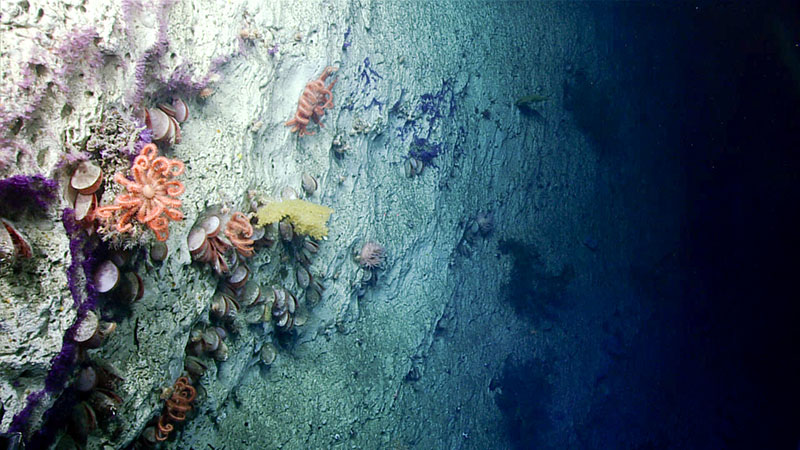
A diverse assemblage of invertebrates was documented on the canyon wall during dive 12 of the Deep Connections 2019 expedition. This assemblage included Novodinia sea stars, yellow octocorals, purple stoloniferous octocorals, flame scallops, and anemones. Image courtesy of the NOAA Office of Ocean Exploration and Research, Deep Connections 2019. Download larger version (jpg, 1.5 MB).
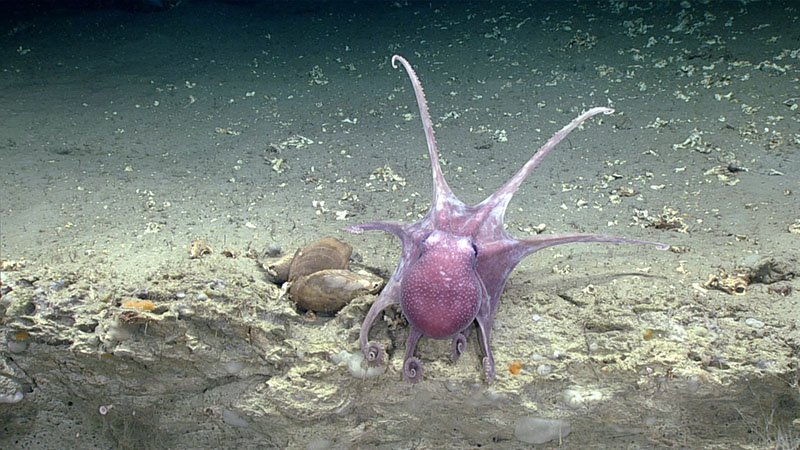
Warty octopus (Graneledone verrucosa) and shortfin squid (Illex illecebrosus) were observed during dive 12 of the Deep Connections 2019 expedition. Image courtesy of the NOAA Office of Ocean Exploration and Research, Deep Connections 2019. Download larger version (jpg, 1.4 MB).
As the ROVs ascended the canyon walls, the lithology transitioned into the sheer carbonate rocks that were also observed during our previous dive at Veatch Canyon. In some patches, these walls were encrusted with flame scallops, sea stars, cup corals, yellow octocorals, purple stoloniferous corals, bubblegum corals, and black corals. Variations in lithology were also observed, with thin intervals of much harder carbonate rock, which was more heavily encrusted with life than the softer interceding areas. Five samples were collected on this dive: a demosponge, a small primnoid coral, two specimens of Acanthogorgia sp. with many associates, including aplacophorans, and Parantipathes larix with associated brittlestars and squat lobsters.
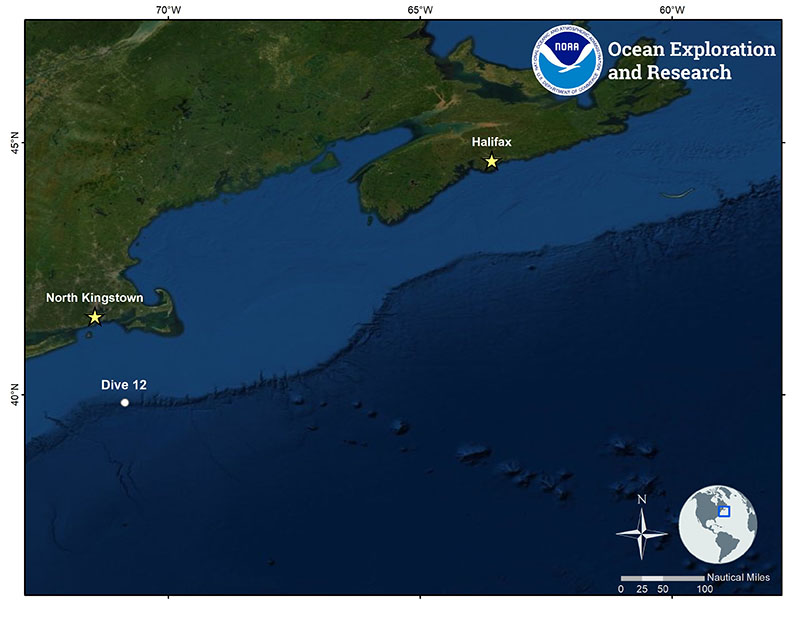
Location of Dive 12 of the Deep Connections 2019 expedition on September 14, 2019. Download larger version (jpg, 1.7 MB).
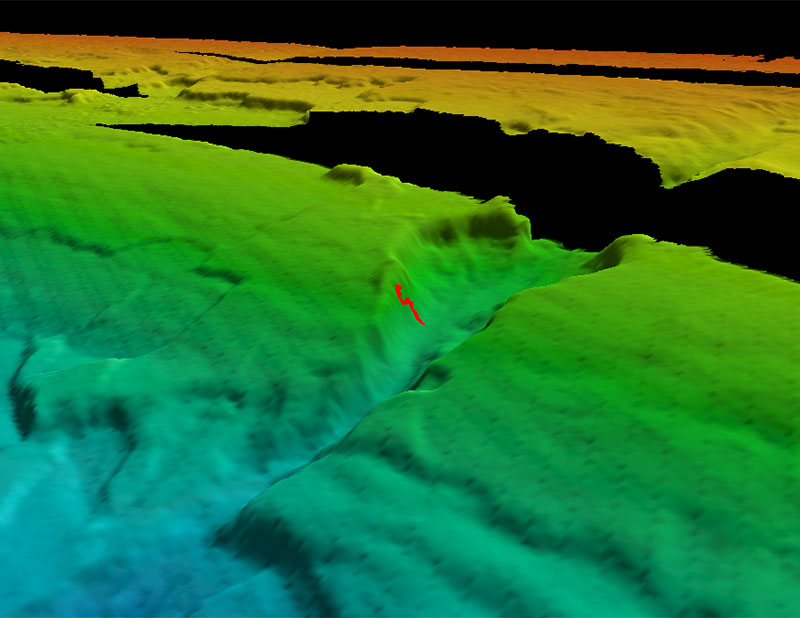
Map showing the dive track of Dive 12 of the Deep Connections 2019 expedition. Scale is water depth in meters. Download larger version (jpg, 514 KB).